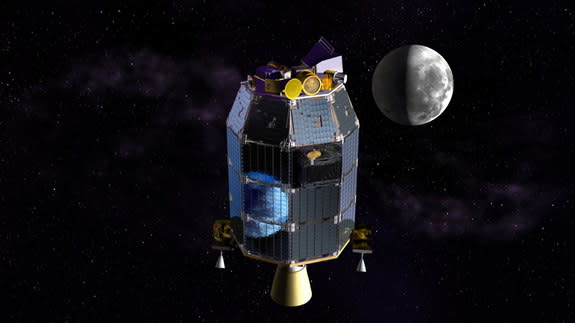 Science and Weather
Science and WeatherNASA Moon mission seeks to solve mystery of lunar atmosphere

NASA's LADEE, the Lunar Atmosphere and Dust Environment Explorer, is set for its launch into space on Friday night, and this newest mission to the Moon will be playing detective, as it gathers clues to solve a mystery that has lasted for over 40 years.
The astronauts of Apollo missions 8, 10, 15 and 17 were all witness to something they thought shouldn't be possible on the moon — twilight rays. The Apollo 17 astronauts even sketched some while they were there. We see twilight rays here on Earth all the time, but that's due to the fact that we have a thick atmosphere (and clouds and haze for sunlight to shine through). With the moon's very tenuous atmosphere, noone expected to see them, and this is one thing that LADEE will investigate during its mission.
LADEE will orbit the Moon until sometime in mid-February, sending back every scrap of data it can gather about the thin lunar atmosphere and lunar dust. Once its mission is complete, NASA will send it off with a bang, as it plans on crashing the probe into the Moon's surface.
[ More Geekquinox: Voyager 1 celebrates its 36th birthday at the edge of the solar system ]
LADEE is set to lift off from Wallops Island, Virginia, at 11:27 p.m. Eastern Time Friday September 6th, riding atop a Minotaur V rocket, provided for the mission by Orbital Sciences Corporation.
You can watch the launch on NASA TV, as they'll be broadcasting over the web from 9:30 p.m. to 11:35 p.m. ET (click here for the channel).
Also, depending on where you live, you can actually watch the rocket as it blasts into space. Orbital Sciences has provided a map that shows who can see it (click here).
It won't be easy to see from Canada, however, anyone living from Kingston, Ontario and eastward, through Montreal and anywhere else in Quebec south of the St. Lawrence River, as well as in southern New Brunswick and Nova Scotia, has a chance to catch a glimpse of the rocket, very close to the horizon, at just before 11:30 p.m. ET (12:30 a.m. Atlantic Time). The launch goes out over the Atlantic Ocean, so look towards the southeast.
Geek out with the latest in science and weather.
Follow @ygeekquinox on Twitter!


